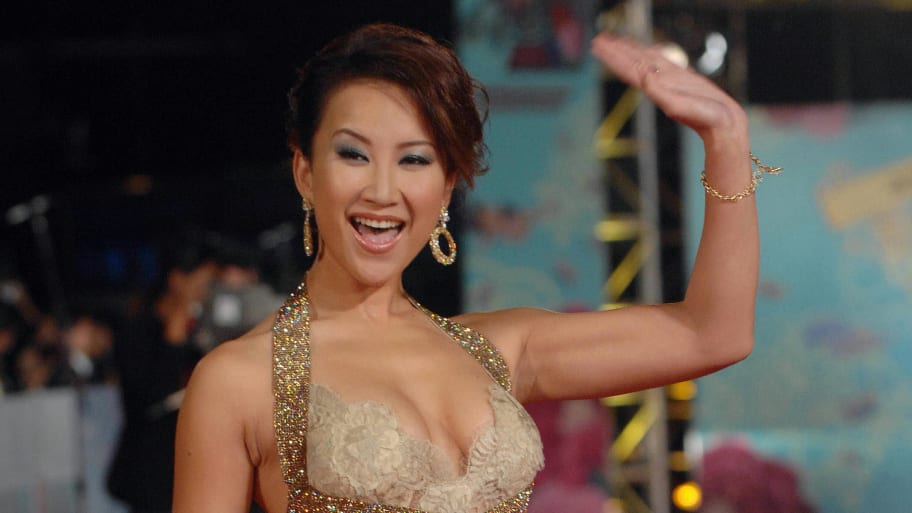Let’s cut the crap. You think you’ve seen it all. A creaking door, a shadow in the corner, a ghostly whisper. Modern horror has left us desensitized, drowning in a sea of lazy jump scares and predictable plots. But what happens when a master filmmaker picks up those tired, worn-out tools and builds a masterpiece?
Directed by the modern maestro of fear, James Wan, this 2013 film didn’t just try to scare you; it conducted a symphony of dread, building suspense with the precision of a Swiss watchmaker. It claimed to be “based on true events,” a phrase we horror fans often meet with a rolling of the eyes. But this time, the claim was attached to the most famous paranormal investigators in American history: Ed and Lorraine Warren.
This isn’t just another ghost story movie. This is a case study in cinematic terror. So, buckle up, and let’s dissect why The Conjuring remains the gold standard for supernatural horror and the terrifying, real-life nightmare that started it all.
What is The Conjuring Horror Movie REALLY About?
On the surface, The Conjuring follows a simple, almost classic, ghost story movie structure. The Perron family—Roger (Ron Livingston), Carolyn (Lili Taylor), and their five daughters—move into a secluded Rhode Island farmhouse in 1971. They’re looking for a fresh start but encounter a living hell. The house is a pressure cooker of paranormal activity, from chilling breezes and mysterious bruises to the haunting scent of rotting flesh.
Desperate, they call in the big guns: Ed and Lorraine Warren (played with iconic gravitas by Patrick Wilson and Vera Farmiga). Ed is a demonologist, the Church’s sanctioned tough guy for supernatural infestations. Lorraine is a clairvoyant, a sensitive who can see and feel the traumatic echoes left by the dead. Together, they form the sole defense against a demonic entity that has targeted the Perron family.
The film is a relentless escalation. It’s not about a single ghost; it’s about a house that is a gateway for a malevolent force that wants to claim the family’s soul.
Why The ‘Based on True Story’ Hook is a Game-Changer
Hollywood loves to slap “based on a true story” on its posters. It’s a cheap trick to add a layer of credibility. But with The Conjuring horror movie, the connection to the real-world paranormal investigators, the Warrens, is the entire foundation of its terror.
The Real Ed and Lorraine Warren:Whether you love them or question their methods, the Warrens were real individuals.


The Real Perron Family Case: The Perron family’s account forms the spine of the movie. In interviews, the real Carolyn and her daughters have corroborated many of the events depicted: the invisible entities that would pull their hair and bedsheets, the spectral sightings of an old woman named Bathsheba, and the violent possession that targeted Carolyn. This ghost story isn’t just a writer’s imagination; it’s a family’s documented trauma.
The Perron Family Haunting: The True Story Behind The Conjuring
This historical context is the film’s secret weapon. Knowing that a real family claims to have lived through this hellish ordeal adds a visceral, unsettling layer that pure fiction can never achieve.
How James Wan Masterfully Builds Suspense Instead of Relying on Jumpscares
This is where The Conjuring transitions from a good story to a great film. James Wan understands a fundamental truth that most horror directors forget: what you don’t see is infinitely scarier than what you do.
The Power of Restraint: For the first 40 minutes, there is no traditional, loud-noise jumpscare horror. Instead, Wan builds a chilling atmosphere through sound design and camerawork. A door creaks open on its own. A child whispers to an unseen friend. A music box plays a haunting tune. The camera, often a steady, sweeping handheld, forces you to scan the background, to become an active participant in the dread. You’re not being assaulted; you’re being hunted.
The “Hide and Clap” Scene: A Masterclass in Terror
If there’s one sequence that defines the film’s genius, it’s the “hide and clap” scene. Carolyn is blindfolded, clapping her hands to find her daughter. She enters a room, and in the background, the closet door silently swings open. A pair of hands emerge from the darkness and CLAP.
The genius? No shrieking violin. No sudden cut. The scene holds, letting the horrifying revelation sink in, before cutting to the daughter being in another room entirely. It’s a moment of pure, unadulterated dread. The film presents a scenario where a jump scare is expected and then denies it, making you even more terrified of when the other shoe will drop.
This suspense and buildup in horror is what makes the film’s eventual, and well-earned, jump scares so effective. They feel like a release of the immense pressure Wan has been building, not a cheap trick.
Where The Movie Takes Creative Liberties: Drama vs. Reality
Let’s be clear: “based on a true story” is not a documentary. The Conjuring is a dramatization, and it takes significant liberties to heighten the cinematic experience.
The Condensed Timeline: The real Perron hauntings occurred over nearly a decade. The film compresses the events into a matter of days or weeks to maintain a breakneck pace and a sense of immediate, escalating danger.
The Bathsheba Entity: The film presents Bathsheba Sherman as a satanic witch who sacrificed her child to the devil and now haunts the property, aiming to possess mothers to kill their children. While a woman named Bathsheba Sherman did live on the property in the 19th century, the historical record shows no evidence of her being a murderous witch. The film creates a more centralized, cinematic villain from the folklore of the area.
The Exorcism Scene: The climactic exorcism scene is pure Hollywood bombast. While the Warrens were present during attempts to cleanse the Perron home, the film’s version—with a full-blown Catholic exorcism ritual, violent levitation, and a dramatic face-off—is a fabrication. The Catholic Church rarely grants official exorcisms, and the real events were reportedly less visually spectacular, but just as terrifying for the family.
This analysis of how true events were dramatized isn’t a critique; it’s essential to understanding the film’s craft. It shows how a skilled writer and director can shape real-life accounts into a compelling narrative structure without losing the core emotional truth: a family was profoundly terrified.
What Makes the Trailer So Effective? A Tease of True Terror
The official trailer for The Conjuring is a mini-masterpiece in marketing. It doesn’t show the monster. It sells the premise and the pedigree.
It Establishes Credibility: It opens with text cards about the Warrens and their “over 10,000 cases,” immediately lending it an air of authenticity that separates it from fictional peers.
It Highlights the Cast: It shows off the powerful, believable performances of Vera Farmiga and Patrick Wilson, making it clear the film isn’t a B-movie with amateur actors.
It Teases the Scares: We get quick, disorienting glimpses of the hauntings—the bouncing handclap, a shadow behind a door, a possessed face—without spoiling any of the major set pieces. It promises a slow-burn haunted house attraction experience, not a gore-fest.
The trailer perfectly encapsulates the film’s promise: a serious, well-crafted, and supposedly true story of a family terrorized by spirits.
How to Watch The Conjuring and Its Legacy Today
Where to Watch: You can stream The Conjuring horror movie on major digital and VOD platforms like Max, Amazon Prime Video, and Apple TV.
Its legacy is undeniable. This film single-handedly launched the “Conjuring Universe,” a sprawling franchise of interconnected films. But more importantly, it brought supernatural horror back to the forefront with a focus on old-school craft. It reminded audiences and filmmakers alike that true fear comes from anticipation, character, and atmosphere.
It’s the perfect base template for suspense. You can study its pacing, its sound design, its camerawork. It’s a film that respects the intelligence of its audience and the potency of its own scares.
A Haunted House for the Ages
So, is The Conjuring the scariest movie ever made? For a modern audience, it’s a strong contender. It’s not just about the demonic possession or the ghostly presence. It’s about the experience.
Watching The Conjuring is like going through a world-class amusement park haunted house. You know the skeletons are plastic and the zombies are paid actors, but the lighting, the sound, and the impeccable timing of the scares make you forget the mechanics. You scream. You jump. You have a blast.
James Wan’s film achieves the same feat. You forget you’re watching a movie constructed from familiar ghost tropes. You are simply immersed in the 1970s haunted house setting, feeling every creak and sharing every terrified glance with the Perrons and the Warrens. It’s a chilling, masterfully executed ride that earns its place not just as a great horror movie based on true events, but as one of the greatest horror films of the 21st century. Just maybe don’t watch it alone in the dark. You’ve been warned.
